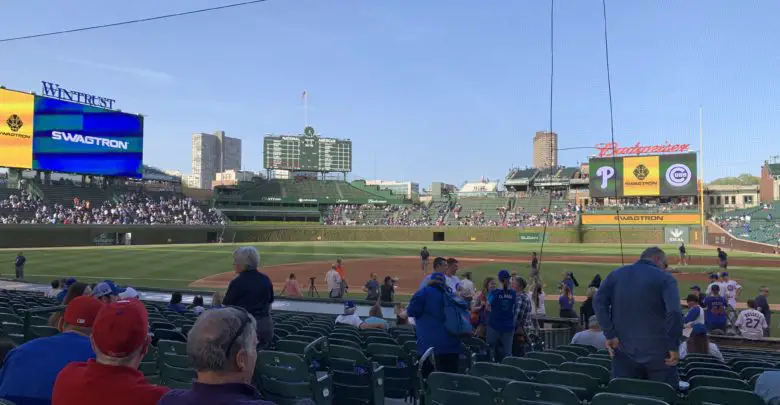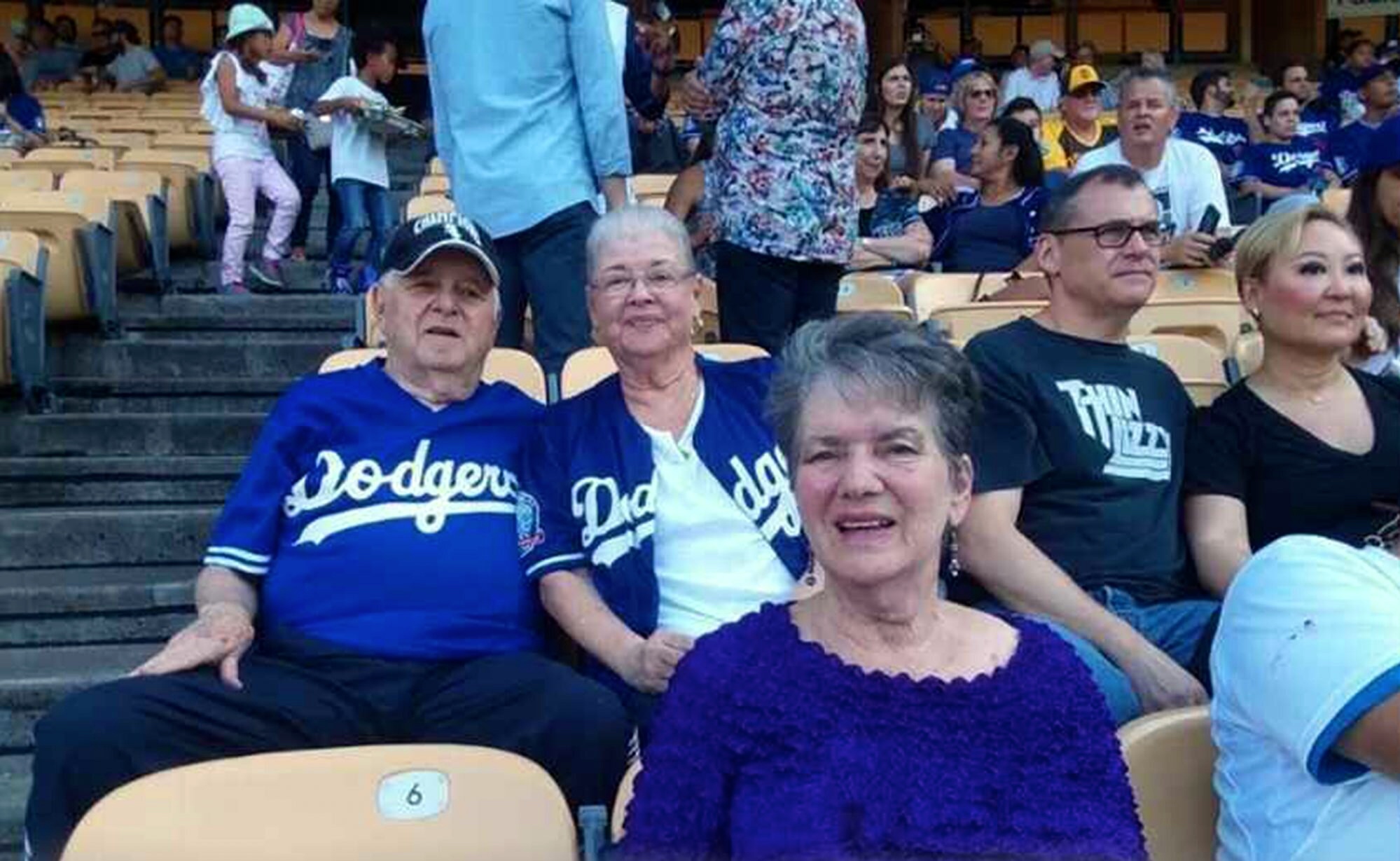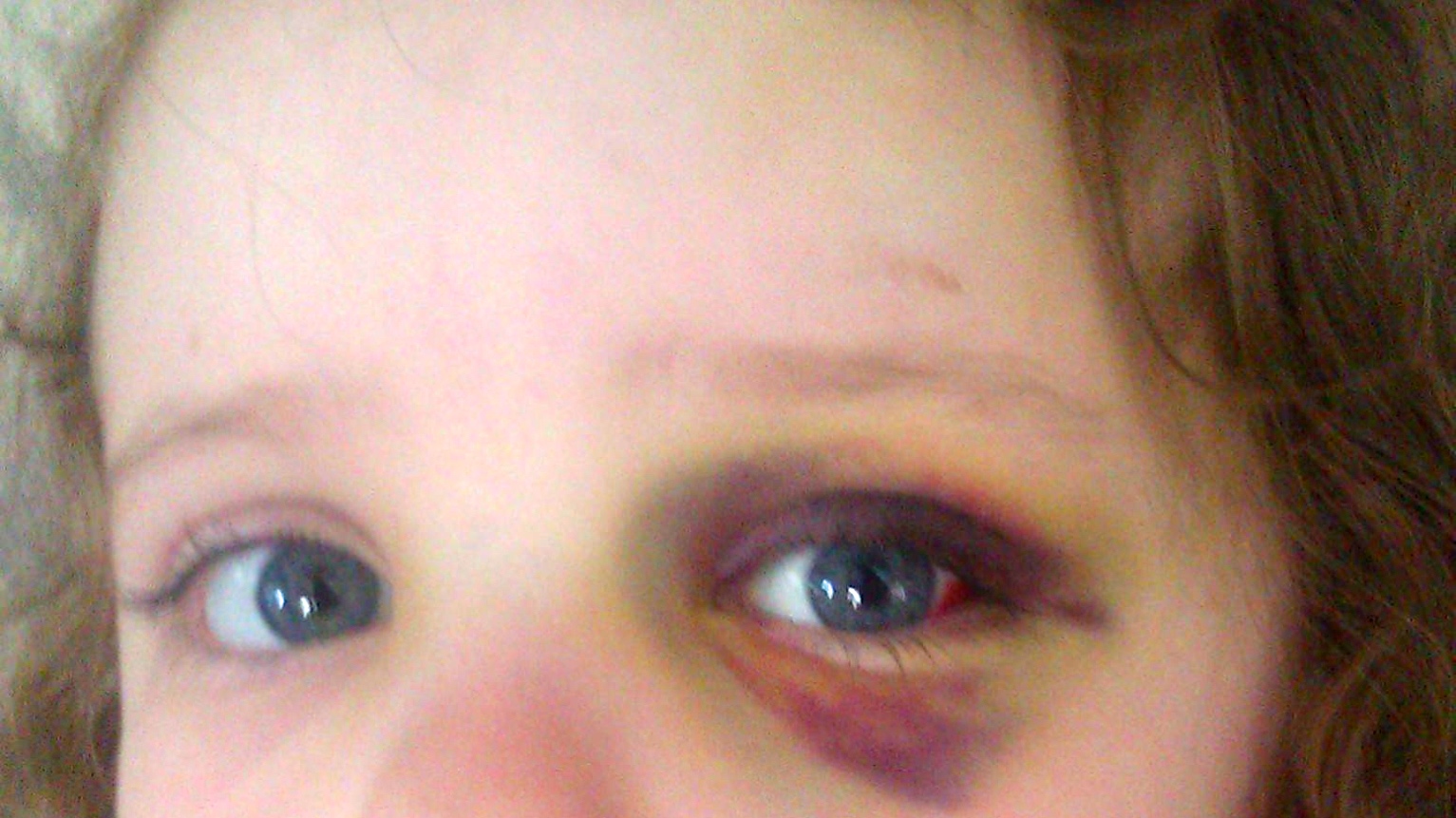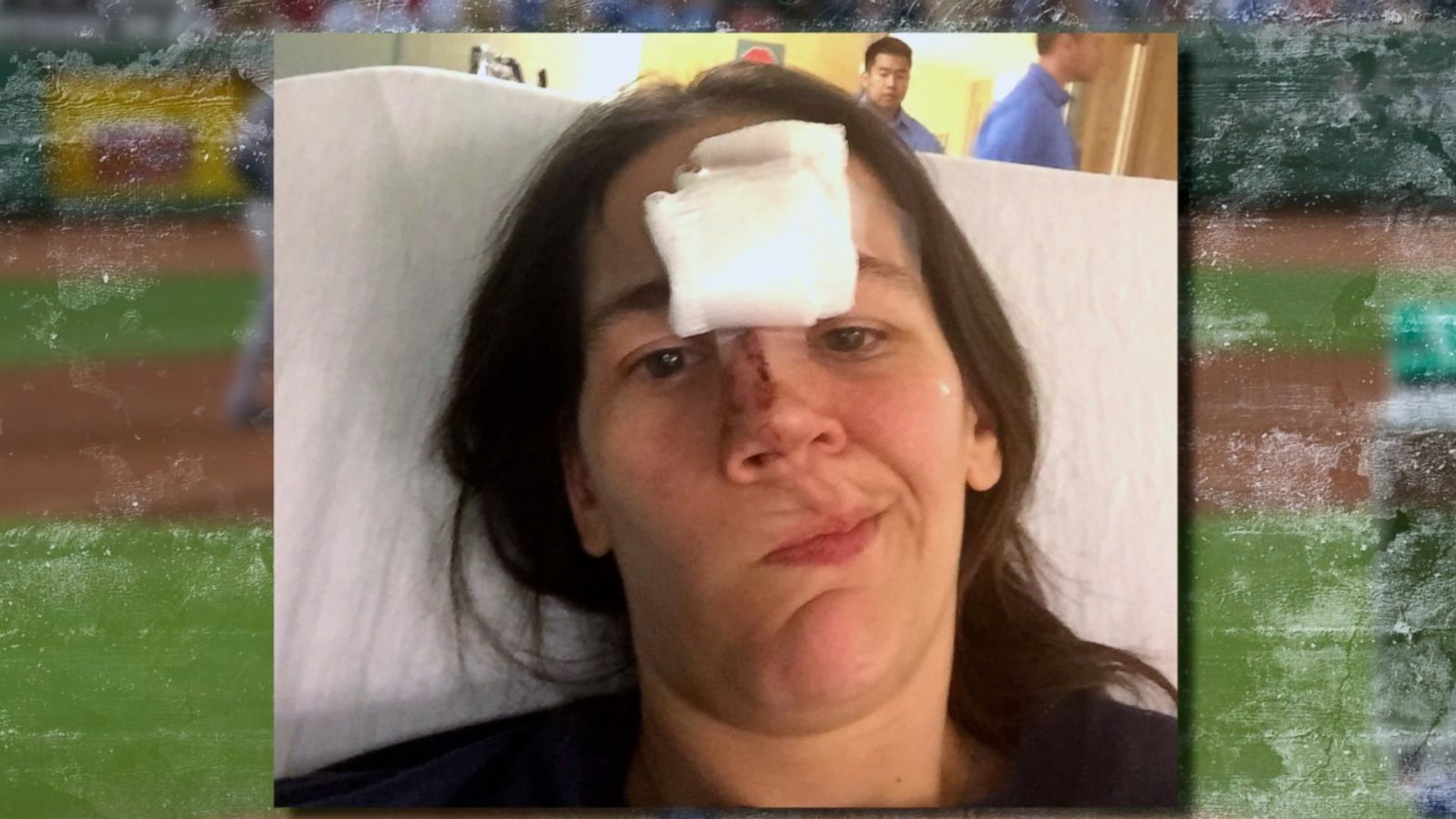
The Net Result of MLB’s Indifference: How League Has Failed to Protect Fans
Safety isn't expensive, it's priceless.
John Wesley Powell once said, “The wonders of the Grand Canyon cannot be adequately represented in symbols of speech, nor by speech itself. The resources of the graphic art are taxed beyond their powers in attempting to portray its features. Language and illustration combined must fail.”
In many ways, this is what we experience when attending a major league game in person as we’re being consumed by a variety of emotions. Our senses are overwhelmed as we walk out of the tunnel and witness the enormity of the stadium in all its splendor. The comforting warmth of the sun on your face or the memorizing brilliance of the lights at night. The camaraderie of the home crowd cheering in unison or the pride in wearing your team’s colors in enemy territory. The vibrations in your chest as the fans roar in delight, the crack of the bat as it makes perfect contact with the ball. It’s magic.
One thing you should never have to feel is fear.
But that’s exactly what Linda Goldbloom felt when she attended a Dodgers game in 2019. In her case, it was fear for her life. In the top of the 9th inning, a San Diego Padres batter fouled back a pitch just off the first-base side of home plate. The ball sailed into the loge area, hitting Goldbloom in the head as she sat in Section 106, Row C, Seat 5. She remained conscious after being struck and was immediately tended to by Dodgers staff.
“Ushers came down and asked if she was all right, and she said no, then EMT came and rushed her to the hospital — she threw up in the ambulance,” Goldbloom’s daughter, Jana Brody, told ESPN.
For three days, Goldbloom was unresponsive, according to Brody. Her eyes never opened at the hospital and a ventilator kept her breathing. Per her wishes, she was taken off life support and died at Cedars Sinai Medical Center in West Hollywood as a result of an “acute intracranial hemorrhage due to history of blunt force trauma,” as stated by the coroner’s report.

Unfortunately, Goldbloom’s story is only one of many cautionary tales. In 2011, Alexis Hoskey, who was only four years old at the time, was hit just above her left eyebrow by a foul ball off the bat of Royals third baseman Wilson Betemit. Covered by the overhang near left field, her father, Monte Hoskey, said he never gave much thought to a foul ball reaching their seats.
“It took me a couple seconds to realize what happened,” Hoskey told News-Press Now. “I saw it happen, but when she didn’t start crying right away, I kind of started doubting if it actually had hit her or not and if that’s what I really saw.”
Alexis was taken to a first-aid room in Kauffman Stadium where she received treatment, but her father took her to University of Kansas Hospital for a CT scan which showed she had suffered a concussion as well as a sub-dermal hematoma. At this point, doctors feared if there was an increase of blood on the brain, Alexis could potentially lose her motor functions permanently.
“The doctor told us, ‘Well, bad news, there’s blood on the brain and the skull is fractured,’” Hoskey said.
Alexis was then admitted and given a second CT scan the next day, which showed the amount of blood had not increased. However, while this could have been much worse, her story doesn’t exactly have a happy ending. In 2020, nine years after the accident, Alexis began to have issues with her short-term memory and doctors diagnosed her with ADHD resulting from severe trauma to the head.
Hoskey says this is something his daughter will now have to deal with for the rest of her life and attributes the injury to MLB failing to act in the best interest of the fans. According to him, there were no warning signs anywhere in the stadium and he claims the only mention of possible danger was the fine print on the back of the ticket.
Monte Hoskey calls himself a casual fan and says the league should have made sure the Royals had postings or communication geared towards individuals such as himself who don’t attend regularly enough to be cognizant of the potentially life-threatening circumstances.

In July of 2015, Stephanie Wapenski was celebrating her one-year engagement anniversary with her fiancé at Fenway Park. They scored tickets to the Red Sox-Yankees rivalry and were seated along the third-base line between home plate and the visitor’s dugout. Didi Gregorius sent a line drive into the crowd, striking Wapenski on her forehead directly between her eyes.
She was rushed to the hospital where she received 35 stitches and was treated for a concussion. Doctors told her if she had been hit on the temple, only a few inches from the site of impact, she could have died. Wapenski sarcastically said she’s “lucky enough” to have a multitude of lingering effects still to this day resulting from her injury.
“I saw a flash of white, and then just silence,” she told the Boston Herald. “I sat there with my head in my hands. My husband really thought he was going to lose me. The tone in his voice when he cried out for help is something I never hope to hear again.”

Brody, her father Erwin Goldbloom, the Hoskeys and Wapenski have now joined forces with Jordan Skopp, founder of Foul Ball Safety Now, an organization dedicated to achieving the proper and uniformed installation of netting in all ballparks, major and minor leagues alike. Skopp is calling for the certification of stadiums by an independent netting council comprised of past victims, members of the legal and medical communities, public safety officials, and netting experts to ensure nobody has to experience tragedies like the ones highlighted above.
Foul Ball Safety Now desires to give the injured parties a voice and the chance to express themselves in a meaningful way. Recently, Skopp hosted a press conference via Zoom which Cubs Insider was invited to attend. Skopp was joined by each of the previously mentioned individuals, as well as their families, to discuss what they endured and what they hope to see happen moving forward. It was hard to listen to their testimonials and not feel a responsibility to help in earnest.
“MLB doesn’t seem to want to do anything on their own,” said Monte Hoskey. “Getting this group together will hopefully move things forward. Maybe we can get some momentum and MLB will have an epiphany and take over for us so we don’t have to continue pursuing something that really should be their responsibility and not ours.”
In 2019 in MLB stadiums alone, 15 fans experienced head trauma resulting from a foul ball. A non-COVID season is 26.5 weeks in duration, which means there was more than one injury every two weeks. While admitting the exact data is unknown, Skopp is quick to point out that the minor leagues play three times the total number of games as their major league counterparts. Therefore, he says, it’s safe to assume there are three times as many injuries to fans in a minor league season.
Skopp doesn’t hold back when speaking about MLB, going as far as comparing them to Big Tobacco in the sense of keeping their customers in the dark through misinformation or, in most cases, offering no information at all. He decries a lack of accountability from the league and plans to take his crusade all the way to congress in order to inspire a bill enforcing optimal safety in ballparks. Skopp says he has sent letters to the commissioner as well as various mayors but has yet to receive appropriate responses when asked about netting or how they plan to better protect the fans in the future.
During his press conference, Skopp referenced an NBC News investigation that found “at least 808 reports of injuries to fans from 2012 to 2019,” including concussions and permanent vision loss. This data was not obtained directly from the commissioner’s office and was instead based on “lawsuits, news reports, social media postings and information from the contractors that provide first aid stations at MLB stadiums.” The fact that NBC wasn’t able to go directly to the source only strengthens Skopp’s argument of the league acting as if it has something to hide.
In fact, Skopp believes if MLB and its teams had been appropriately forthcoming, the final tally would have been somewhere in the thousands. One of the ballparks where NBC obtained emergency response data was Coors Field in Colorado, which showed the majority of calls for first aid occurred in areas beyond the reach of protective netting. Bob Gorman, author of “Death at the Ballpark,” agrees with Skopp and says the number of fan injuries is likely much higher than what NBC was able to unearth and also believes the league is covering up the truth.
“I think the number is a lot higher than people realize. I think the teams know it,” Gorman told NBC. “I think they’ve intentionally downplayed it.”
A poll conducted by Foul Ball Safety Now showed that 78% of fans agree more netting is a good idea. Skopp adamantly believes if those who were surveyed fully understood the dangers, that number would jump even higher. Foul Ball Safety Now plans to leverage the power of crowdsourcing to promote awareness, asking fans to be active on social media when attending MLB games by posting photos of the safety netting with the hashtag #ExtendNettingMLB. It’s their hope this will lead to knowledge of not only which stadiums pose the greatest risk, but which sections within those stadiums are the most dangerous.
“I want to be able to bring my girls to the game and not worry about being hit, no matter where we’re sitting,” said Wapenski
MLB’s hesitancy to install additional netting is dumbfounding, to say the least. Failing to protect the very commodity which keeps their operation running is simply bad business, not to mention downright immoral. As a fan, in no other professional sport do you face the same threat of attending a game and never returning home. It’s time, once and for all, to extend the netting to a greater height (determined by independent safety specialists) and have it run from foul pole to foul pole in all ballparks, including those in the minors as well as spring training facilities.
MLB’s nonchalant “wait-and-see” attitude is simply unacceptable because, at the end of the day, the pain runs much deeper than what we’re able to witness on the surface.
“I want everything to be known and I don’t want anybody else to suffer the loss that we suffered,” said Erwin Goldbloom. “I lost a wife of 59 years. I have three children and seven grandchildren. They all lost a loving grandmother who was healthy and full of life. I chose to be a part of this movement to bring about the fact that this doesn’t have to happen to anyone else again, ever.”
For more information on how to help the cause, visit https://www.foulballsafetynow.com/

